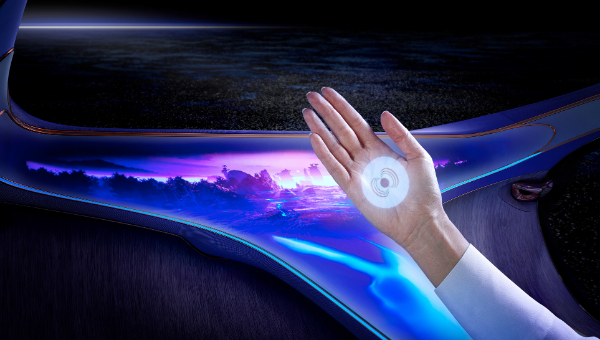
There’s no doubt that automotive electronics are becoming ever more complicated. Vehicles have boxes of electronics tucked into virtually every corner. Of course, this will never change because customers want what they want. New features quickly become the norm and expectations spiral. Consequently, the electrical system of a modern car adds up to significant weight. But while demand for more electronics won’t change, the form in which that demand is satisfied will.
Jaguar Land Rover (JLR) is bringing together a number of technologies that have been in development for some time in an approach it calls LESA (Lightweight Electronics in Simplified Architecture). Basically, the LESA approach consists of printing electrical circuitry directly onto parts, or substrates that are incorporated into parts.
In a trial, the company achieved a weight saving of around 60 percent over conventional circuitry and a control module. LESA is a subset of a broader approach known as structural electronics, a term set to become ever more common. Structural electronics, in turn, belongs to the even broader field of smart materials.
While weight reduction is important for conventionally powered vehicles, it’s even more so for electric vehicles. This would be reason enough to incorporate structural electronics in future models but the advantages go far beyond weight reduction.
With the onset of autonomous transport, many vehicle interiors will move even further toward luxury and elegant simplicity. After all, if you’re not driving the car why have all those switches and chrome-trimmed dials and instruments? Even before complete autonomy arrives there are solid aesthetic reasons for having function disappear into style.
The LESA trial was an overhead map/courtesy light and capacitive control module, but JLR plans the complete transformation of future interiors. The company says, for instance, that touch controls and display information could appear on surfaces like wood and that no screen would be needed. JLR says that lightweight solar cells are another potential application of structural electronics.
The company has been working on blending form and function for some time. We mentioned its Bike Sense project back in 2015. This consisted of interior surfaces that changed to red in the direction of potential hazards involving cyclists. The idea is being extended to allow large sections of interiors to be utilised as functional areas.
Structural electronics relies on a range of techniques that have been in development for some time. Printable electronics is an extremely important one and a number of organisations around the world are conducting research in this area. Massachusetts Institute of Technology (MIT) and our own CSIRO are among them.
For some years MIT has been working on a stamping technique that creates electronic features at nanoscale dimensions using ubiquitous carbon nanotube technology. Carbon nanotubes are made from a single layer of carbon atoms. At scale they’re extremely strong. The nanotubes shown on the left are multilayered.
Researchers at MIT discovered a way of growing vertically aligned nanotubes in configurations suited to printing nanoscale electronic circuits. The nanotubes are likened to ink bearing quills that can deposit conductive ink onto suitable substrates. One future objective is to print on graphene which will allow ultrathin electronic circuitry.
Not surprisingly, precise control of ink deposition at nanoscale is extremely difficult but the ‘carbon quill’ technology developed by the MIT team has managed the problem successfully compared with other attempts to print circuits at this scale. Engineering the correct degree of porosity within the tiny forest of nanotubes has been crucial to controlling ink flow. As is the case with any stamp-based printing process, pressure is the other main determining factor in creating circuits with the required resolution/edge sharpness.
Read Shrink Fit (Part 2). Alternatively, view the full article and accompanying imagery in the April 2020 issue of Australian Automotive, page 46.